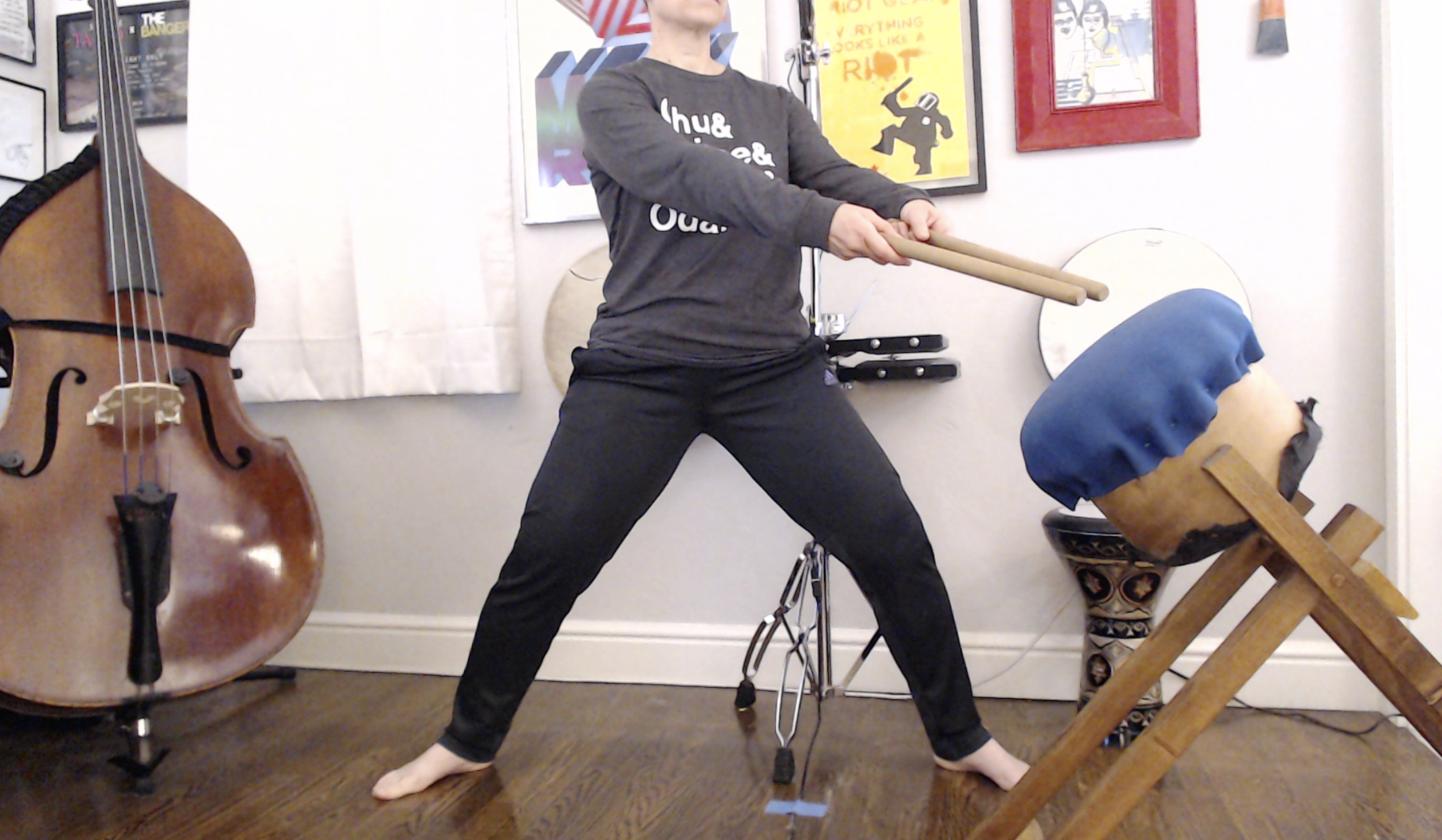Front cam
A teacher should make it as easy as possible for their students to learn. This can be tricky in Zoom classes. Chances are your students have a mix of visual processing styles, and you can (and should!) set them up for success by using multiple camera views. Kristin and I use a front cam and a sky cam in our Zoom classes, and recently added a foot cam as well.
Sky cam
You don’t have to shell out for new webcams to do this. If you host your class meetings on a laptop, use the embedded webcam as your front cam, and your phone as your skycam. (Assuming you have a phone with a camera and wifi.) You’ll need to do a little creative problem solving to set up your skycam, but we’re teaching artists, we eat creative problem solving for breakfast! Kristin and I set ours up by mounting a tripod cell phone attachment to a lamp extension arm, and then hooking that up to the top of a heavy percussion stand. It wasn’t pretty, but it worked!
Once the phone is in place, you’ll host the meeting on your laptop, and also call in as a participant with the cell phone. When you want to use the skycam, turn off your computer video and sound, mute your computer, unmute the phone, turn on the phone video, and spotlight the phone. Reverse these steps to switch back to the front cam. Leave the phone muted with video off unless you’re sky cam-ing. VERY IMPORTANT: You need to plug headphones into the phone to avoid the echo/feedback issue you get when two devices in the same room are on the same Zoom call.
If you have some money to invest, buy a webcam and some USB extension cables. Then, put your webcam in your skycam mount and use the cables to connect it to the hosting computer. It’s much easier to switch between cameras when they’re both plugged into the same device (there’s even a keyboard shortcut to do this in Zoom) and you don’t have to do all that unmute/mute business.
Foot cam
We’ve found that people LOVE the sky cam, particularly when we’re introducing new drills and songs. Just this week we added a foot cam for our naname class. This view shows the teacher from chest down, providing a visual reference for foot placement, leg engagement, and koshi integration. I highly recommend adding this view if you’re focusing on kata or introducing a style people aren’t very familiar with.
Drop me a line if you have questions or want to talk through using multiple camera angles in your classes. Happy teaching!




